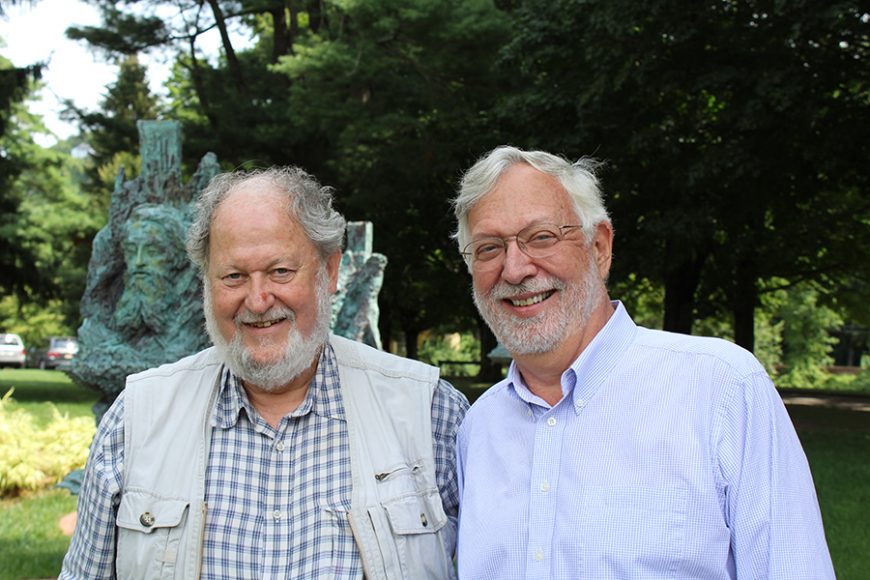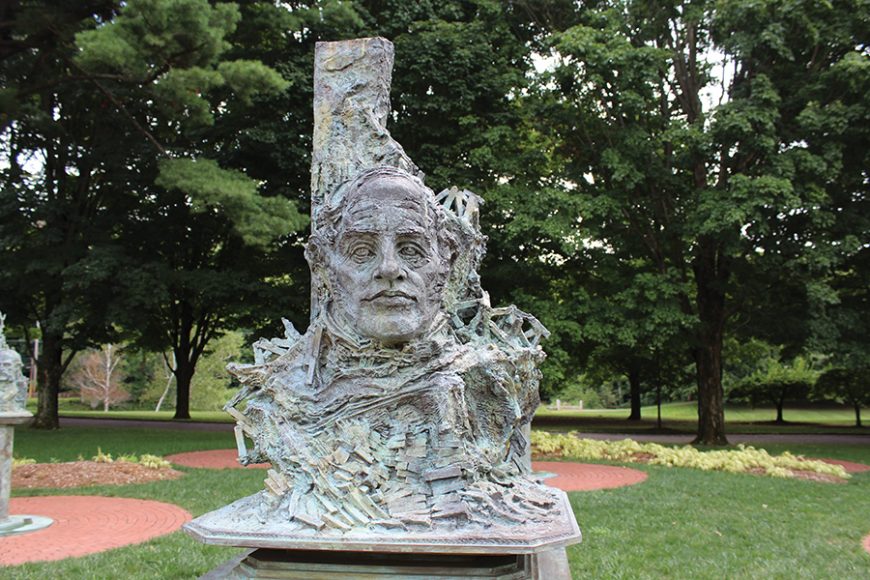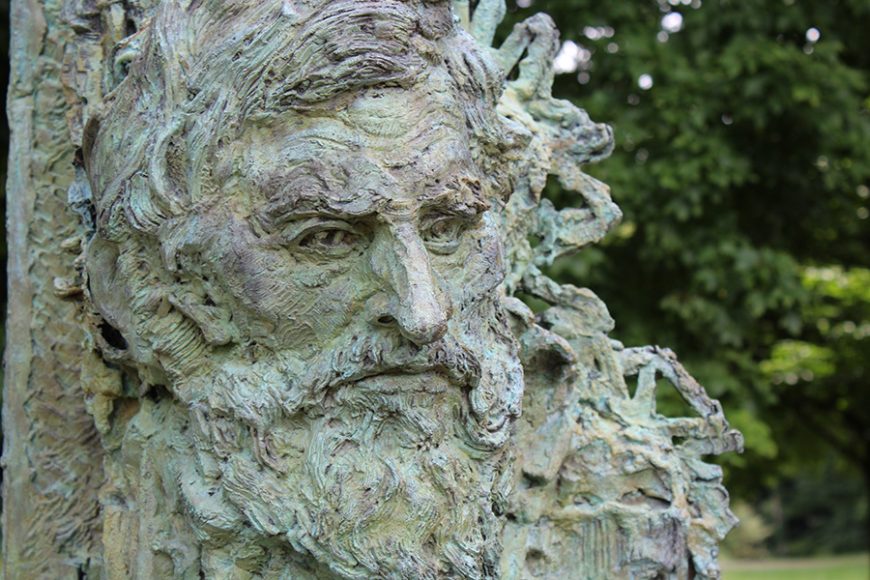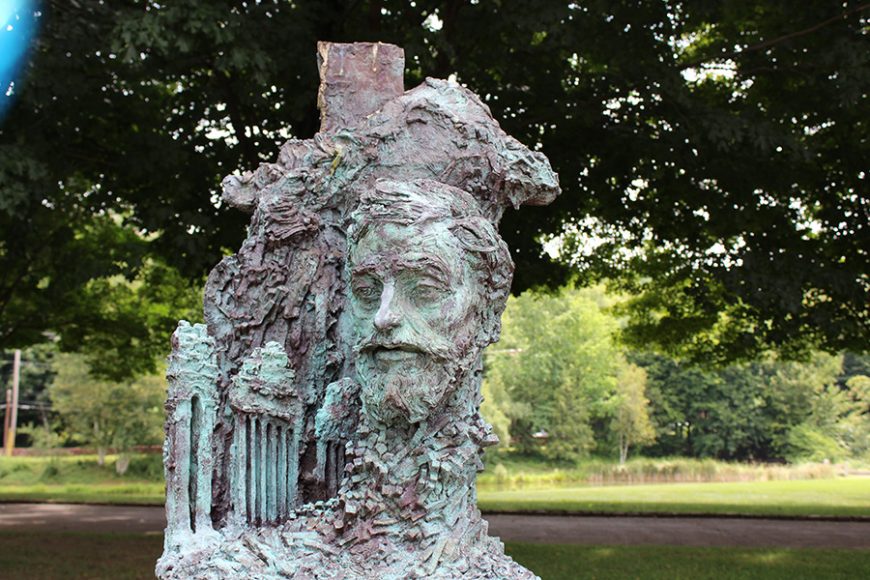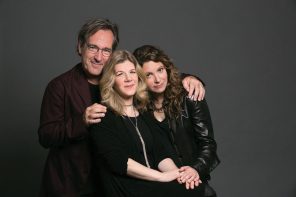In his 1836 “Essay on American Scenery,” the painter Thomas Cole wrote the “river scenery of the United States is a rich and boundless theme. The Hudson for natural magnificence is unsurpassed.”
The England-born Cole’s love for the Hudson River and America’s natural landscapes led him to found a movement in landscape painting that would define America as the new Eden in the decades that bracketed the Civil War.
While never officially organized, the group of landscape painters it attracted later became known as the Hudson River School. And though its artists would eventually travel the world to paint landscapes, they would primarily be known as the artists of the Americas.
This fall, Boscobel House and Gardens will launch a sculpture garden with Greg Wyatt’s bronze busts of 10 artists considered fundamental to the school. Besides Cole, they are Asher B. Durand, Frederic E. Church, Albert Bierstadt, Jasper F. Cropsey, Sanford Robinson Gifford, John Frederick Kensett, George Inness, Thomas Moran and Thomas Worthington Whittredge.
For the onetime home of States Dyckman — known as a fine example of Federal architecture and decorative arts as well as for its commanding Hudson River views that include West Point — launching a sculpture garden dedicated to the Hudson River painters “makes perfect sense for a number of reasons,” says Steven Miller, executive director of Boscobel House and Gardens.
“The Hudson Highlands really was quite famous in the mid-19th century as a location for artists to depict, and those artists were largely involved in the Hudson River School. So it’s kind of the hub of the school and then the spokes go out to the Adirondacks, Berkshires, Maine and into the Northwest and the rest of the globe. ”
The Boscobel mansion itself was first built in Montrose sometime between 1804 and 1808 — it was later moved to its current site — about 20 years before Cole would sell his first set of landscape paintings.
“Even though our historic mansion collection focuses on the Federal period in the early 19th century, this is an appropriate inclusion because we are in such an important part logistically of the Hudson River School,” Miller adds.
Sculptor Wyatt has deep ties to the region that inspired Hudson River School painters as well. He directs the Academy of Art at the Newington-Cropsey Foundation in Hastings-on-Hudson, which preserves the neighboring home of Jasper F. Cropsey and displays many of his works. (The foundation underwrote the sculpture garden.)
Wyatt — sculptor-in-residence at The Cathedral Church of St. John the Divine, home to his 40-foot-tall bronze “Peace Fountain” — also grew up across the river in Grandview-on-Hudson, where he says he’d often venture through the area’s wilderness. While he wouldn’t become aware of the Hudson River School’s significance until he studied art history at Columbia University, Wyatt describes similarly gathering inspiration from his natural surroundings.
“I wouldn’t get in rowboats, as they did, and anchor off the Palisades and do oil sketch studies,” he says. “But I would go to Hook Mountain, an easy bicycle ride from Grandview. I could look at the geology.”
Wyatt started the sculpture garden project by consulting with historians and museum curators to come up with a list of the 10 most important painters to feature.
The sculptures include a biography of each artist, placed on the back in bronze letters. The sculptures also integrate famous works from each artist. A waterfall expressed in bronze runs through the statue of Thomas Moran, a reference to his painting “The Grand Canyon of Yellowstone.”
Moran’s powerful depictions of Yellowstone are credited today with inspiring Congress to establish Yellowstone National Park. Indeed, the Hudson River School is credited with influencing the establishment of the National Park Service as a whole. In the 1960s and 1970s, the artists’ work was used as inspiration for a new environmental movement. That’s a part of the painting school’s historical significance that Wyatt hopes to bring awareness to.
“I really have at least two paths in which I’m reaching out — documenting the importance of environmental preservation and which artists in particular deserve our eternal respect,” he says.
The sculptures will be situated just outside the main entrance of Boscobel. Wyatt has completed and placed seven of them already, with the final three set to be placed in the fall.
The phased installation of the sculptures has, Miller says, given Boscobel a rare chance to observe reactions to a new exhibit before it’s fully rolled out.
“I’ve watched people engage with these sculptures since the first four went up and it teaches them about the Hudson River School. A lot of people who come here are not from America. A lot of people are not familiar with the Hudson River School. So this is an opportunity to teach in a meaningful and informative way.”
There is a reception for the Hudson River School Artists Garden at 9:30 a.m. Nov. 7. Everyone is welcome, but reservations will be required. For more, visit boscobel.org.

